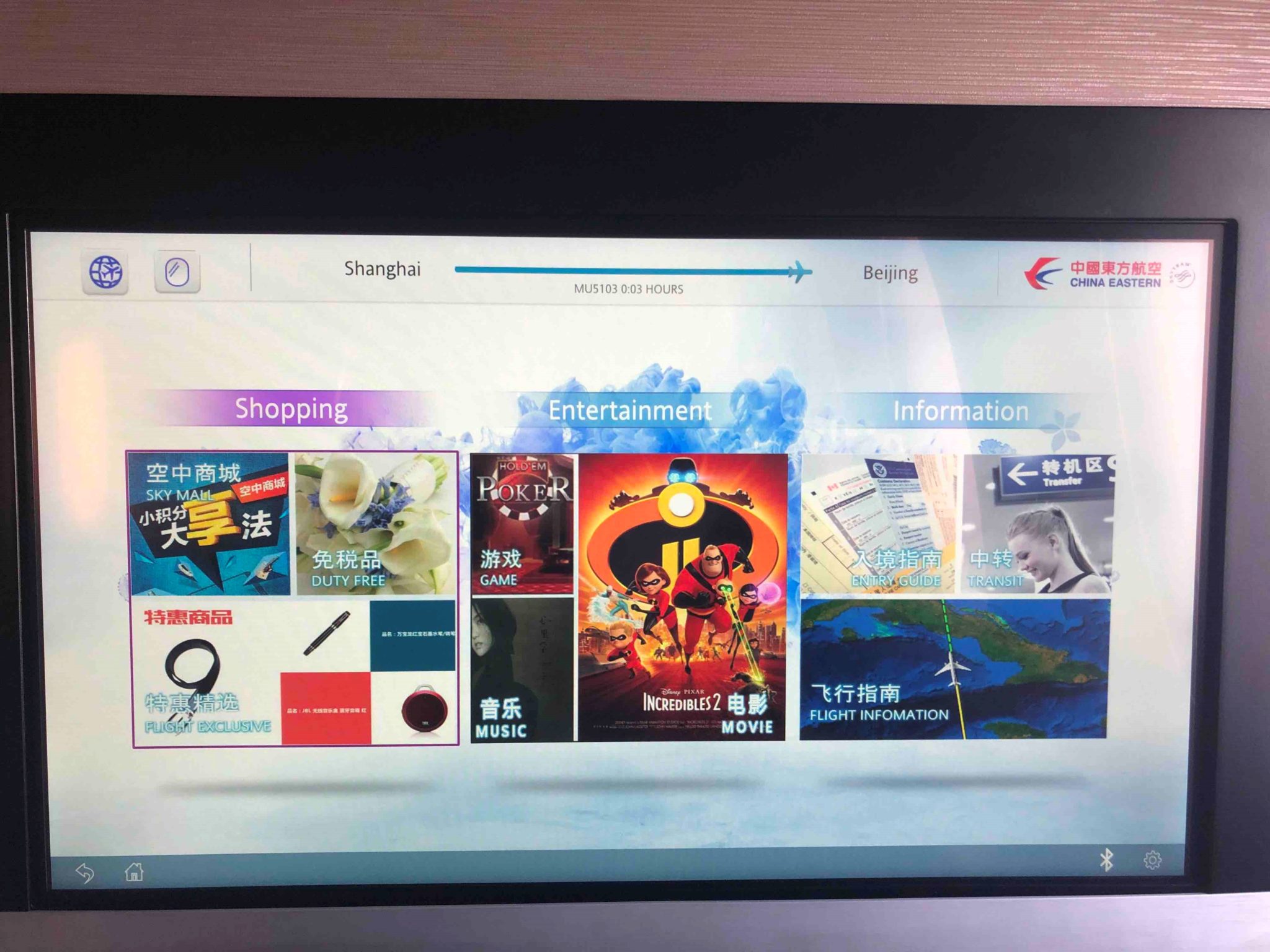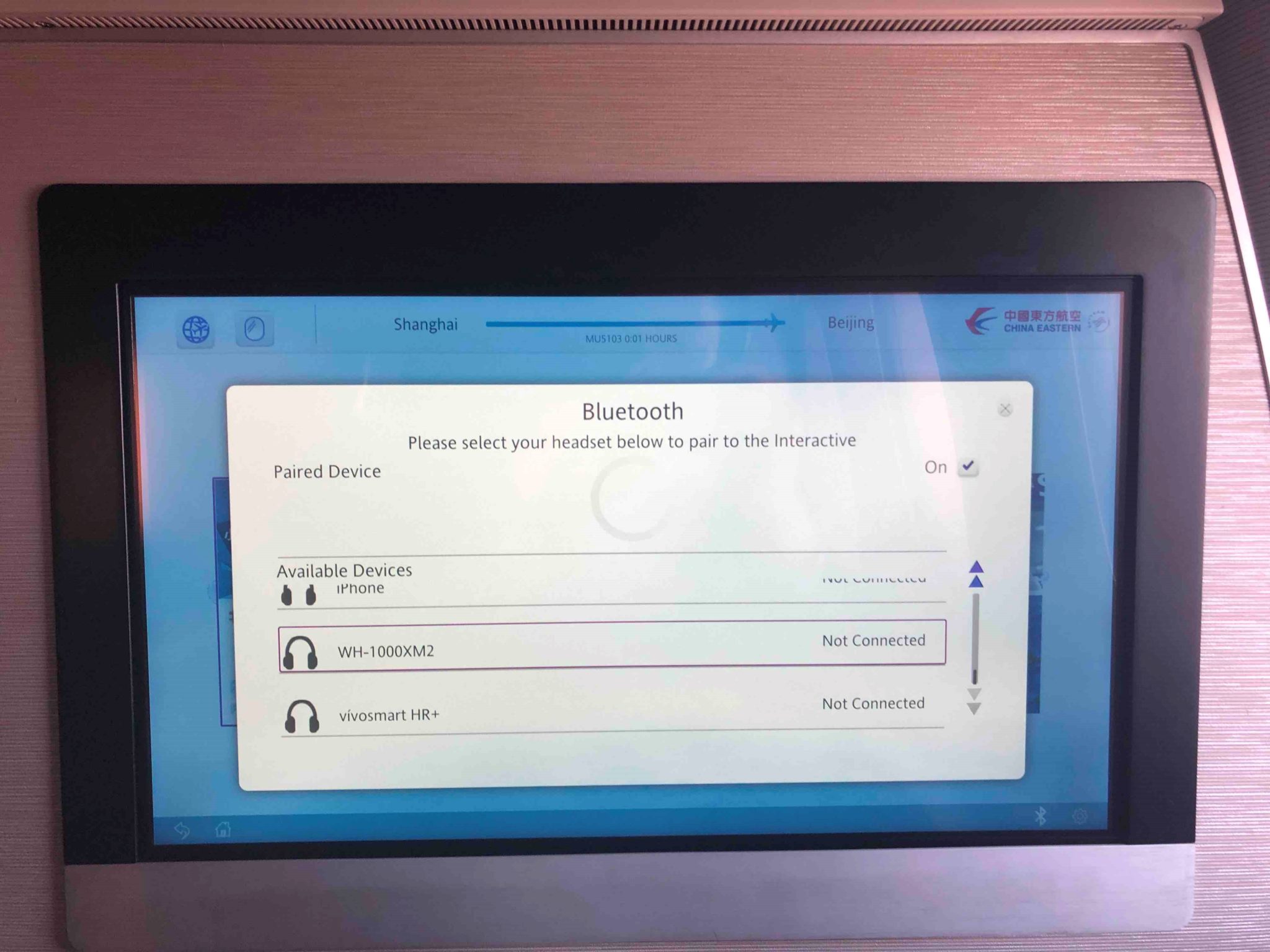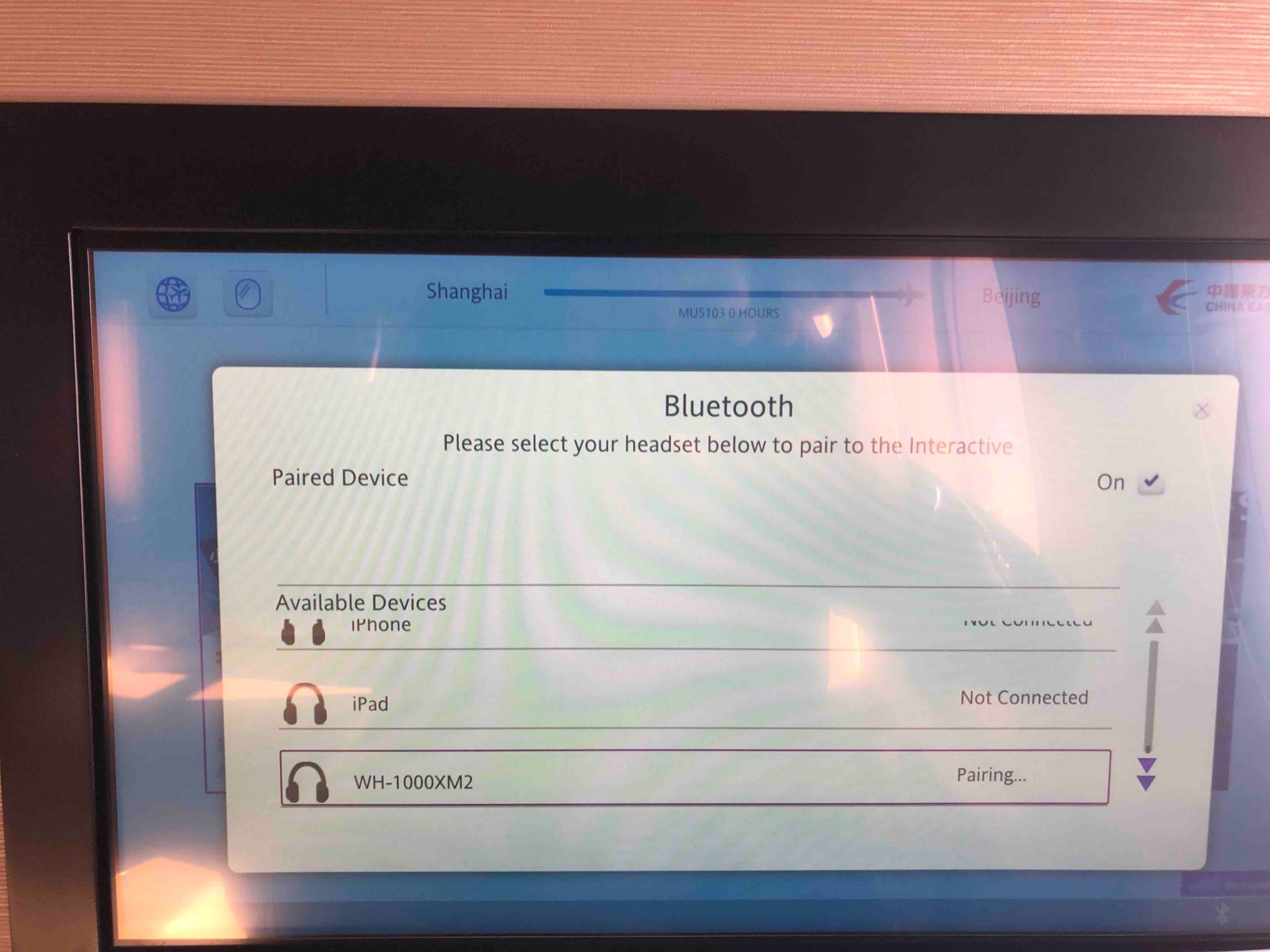According to the Bluetooth® market update 2018, this year, audio streaming Bluetooth® device shipments are expected to increase to 970 million for the year. This includes anything from wireless headsets and wireless speakers to in-car infotainment systems and more. While Bluetooth has always had a strong presence across audio streaming applications, Bluetooth technology is also gaining significant traction in emerging markets, including a wide range of transportation applications like commercial aircraft.
Bluetooth takes flight on China Eastern
The flight route between Beijing and Shanghai is one of the most abundant and busiest routes in China. Many airlines deploy their most advanced and well-equipped airplanes to fly this route. Recently, I had an opportunity to take China Eastern Airline’s latest flagship model, Airbus A350, from Shanghai to Beijing. The airplane, registered by B-304D, is brand new in China Eastern Airline’s fleet. Before the ride, I heard that the onboard entertainment system of each business suite in this airplane installed Bluetooth functionality.
My seat was in economy class, but after boarding the plane and speaking with the flight attendant, he happily agreed to my request and led me to the business class in time to begin the airplane’s descent to Beijing, starting my special Bluetooth® experience.
Bluetooth connectivity in business class
The first thing I noticed was the Bluetooth logo at the lower right corner on the homepage of the entertainment system.

After clicking the Bluetooth logo, the onboard entertainment system enters the mode of Bluetooth device discovery. This mode enables the system to discover nearby Bluetooth® devices, displaying the device name on the screen. My headset is SONY WH1000XM2, so my Bluetooth headset device name was shown below.


When my Bluetooth® headset was paired successfully, the device was shown as connected. Passengers can use the forget this device option to erase the pairing information on the onboard entertainment system.

The significant benefit for business-class passengers is the ability to connect the passengers’ own Bluetooth noise-canceling headset to the onboard entertainment system.
Take my own Bluetooth® noise-canceling headphones as an example. Before the introduction of this solution, if I wanted to connect my Bluetooth noise-canceling headset to the onboard entertainment system, I could only use the cable to connect.
On an airplane, space is inherently limited and adding extra cables is inconvenient. Furthermore, when using the cable to connect the noise-cancelling headset, from the moment I plugged the cable into the headset, the headset shuts down and only works in passive mode like a normal earphone. Without the real, active noise reduction, the practicality is greatly reduced. However, with the system adopted by China Eastern, the passenger experience can be significantly improved. The noise-canceling Bluetooth headset can be used to access the onboard entertainment system while the active and passive noise-reduction functions are enabled.
At present, China Eastern Airline’s A350 airplane is mainly operated between Beijing and Shanghai. In the future, it will expand the routes from the Shanghai hub to include Chengdu and Guangzhou. If you have a chance to try it, enjoy the extraordinary experience of Bluetooth at over 30,000 feet.
Download the Bluetooth Market Update 2018 and discover more trends in wireless audio and forecasts for emerging Bluetooth markets.